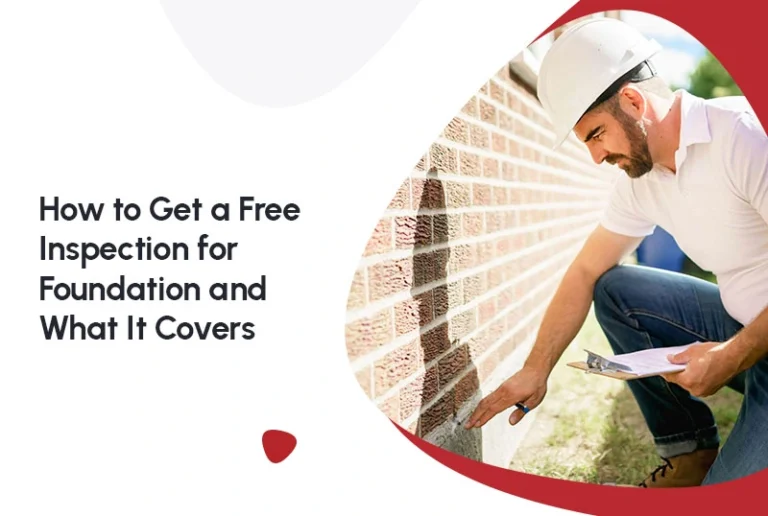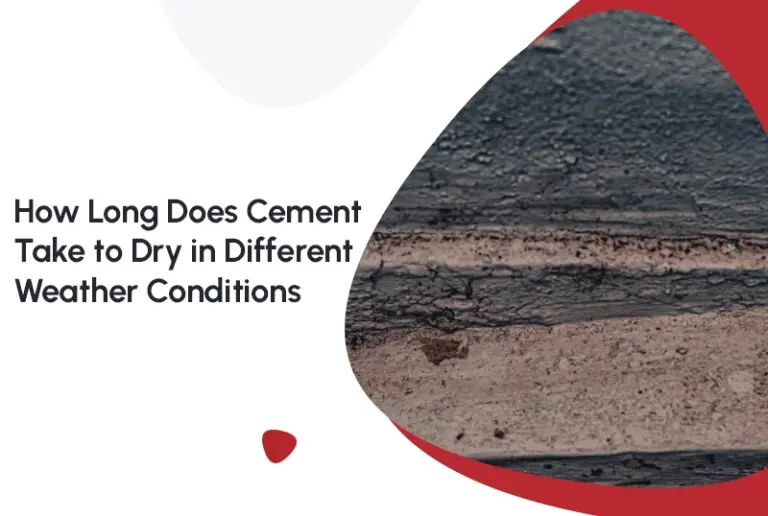When it comes to safeguarding your home’s structure, preventing water damage is key, and the block foundation is one of the most vulnerable areas. If water infiltrates through your foundation, it can lead to serious damage, including mould growth, structural weakening, and costly repairs. Fortunately, waterproofing your block foundation is an effective way to prevent future damage and ensure your home remains dry and secure. In this guide, we’ll walk you through the steps to properly waterproof your foundation and how foundation repair techniques can help keep it in top condition.
Understanding the Importance of Waterproofing
Waterproofing your block foundation is crucial because these foundations are porous and tend to absorb water, especially in areas with high moisture levels or frequent rain. Without proper protection, water can seep into the foundation, causing cracks, erosion, and water damage that could affect the structural integrity of your home. Moreover, over time, the pressure from water buildup can lead to significant settling or shifting, which can be costly to repair.
Even if your foundation currently seems intact, water has a way of creeping in over time. And it’s not just about the visible damage — trapped moisture can degrade indoor air quality, lead to persistent musty odors, and trigger the growth of toxic mould. These problems affect not just your property, but your family’s health as well.
Why Waterproofing is Important
- Prevents water damage: A proper waterproofing system keeps moisture from entering the foundation, reducing the risk of mould, mildew, and wood rot. These issues are often hidden behind walls or under flooring, and by the time they’re visible, the damage is already extensive.
- Increases foundation longevity: Continuous water exposure leads to the slow breakdown of block foundations. Proper waterproofing extends the life of your foundation by keeping it dry, solid, and crack-free for longer periods.
- Protects home value: Homes with moisture issues often lose value. Buyers are wary of water stains, mould, and musty basements. Waterproofing protects your investment and enhances resale appeal.
If you’re seeing signs of water damage like damp spots, mould, or cracks in the walls, it’s time to start considering waterproofing solutions.
Steps to Waterproof Your Block Foundation
Waterproofing a block foundation requires a combination of solutions that create a barrier against moisture. Here’s how you can ensure your foundation is fully protected:
1. Inspect the Foundation
Before beginning the waterproofing process, conduct a thorough inspection of the block foundation. Look for visible cracks, moisture seepage, and any signs of damage. These may include peeling paint, white powder (efflorescence), or soft, crumbling mortar joints. Use a flashlight to inspect corners and crawlspaces, and check for musty smells.
Check both the inside and outside of the foundation walls. Document any damage you find by taking pictures — this can help you monitor changes over time or provide useful records for contractors.
If you find any large cracks or structural issues, consider foundation repair to fix the damage before applying waterproofing solutions. Attempting to waterproof over structural issues is like painting over rust — it hides the problem without solving it.
2. Repair Cracks and Gaps
If your block foundation has cracks or gaps, it’s essential to seal them before applying any waterproofing products. Use a high-quality crack filler, such as hydraulic cement or an epoxy formulated for masonry, to fill these gaps. These materials expand slightly as they cure, creating a watertight seal.
For larger structural cracks, consider calling a professional to perform a polyurethane injection or carbon fiber reinforcement. These techniques address deeper foundational issues and provide longer-term stability.
Let all repaired areas dry and cure fully before moving on to the next step.
3. Apply a Waterproofing Sealant
Once the foundation is repaired, the next step is to apply a waterproofing sealant. There are various types of sealants available, including:
- Liquid membrane coatings: These bond directly to the surface and form a flexible, seamless waterproof barrier. Ideal for high-moisture zones.
- Cementitious coatings: Durable and simple to apply, great for interior basement walls.
- Waterproofing paints: Suitable for minor moisture issues but may not hold up under serious water pressure.
Apply at least two coats of your chosen product, ensuring full coverage across all seams, joints, and corners. A brush is best for tight edges, while a roller or sprayer speeds up coverage for large areas.
Let each layer dry fully, following the product manufacturer’s instructions. The effectiveness of waterproofing depends heavily on proper application.
4. Install a Drainage System
If your home is in an area prone to heavy rainfall, installing a drainage system around the foundation can further protect your block foundation from water damage. Water that collects around your foundation exerts hydrostatic pressure, which pushes water through even the tiniest cracks.
Popular drainage options include:
- French drains: A trench filled with gravel and a perforated pipe that directs water away from the foundation.
- Exterior drain tiles: Installed during excavation, these pipes reroute water away from the structure.
- Sump pump systems: Ideal for interior waterproofing. They collect and pump out water from a sump basin.
Make sure gutters and downspouts are functioning and clean. Extend downspouts at least 5 feet away from the home to prevent pooling water.
5. Ensure Proper Ground Slope
Make sure the ground around your block foundation slopes away from the house. The soil should slope downward at least 6 inches for every 10 feet of distance from the foundation. This ensures that water doesn’t accumulate near the walls and is directed away from the structure.
When Should You Consider Professional Help?
While some homeowners may opt to waterproof their block foundation themselves, hiring a professional is recommended for larger or more complex jobs. Professionals have access to advanced tools and commercial-grade sealants, which often last longer and provide more robust protection than DIY options.
A contractor can:
- Properly assess structural issues before waterproofing begins
- Recommend and install the right drainage systems
- Perform precision crack repair using injection methods
- Apply exterior membrane systems requiring excavation
If your basement floods regularly or you see signs of foundation movement (uneven floors, sticking doors, growing wall cracks), don’t delay. Structural issues get worse and more expensive with time.
The Role of Block Foundation
In some cases, if the block foundation is already showing signs of settling or shifting, you may need to consider pier & beam foundation repair This technique involves driving steel piers into the soil below the foundation until they reach stable ground. These piers then lift and support the structure, preventing further settling.
Once your foundation is stabilized, you can then proceed with waterproofing. This combination approach ensures long-term stability and protection from water-related damage. Ignoring either component — stabilization or sealing — compromises the entire system.
Concrete Slab Foundation Repair: When It’s Necessary
While block foundations are common in many homes, some properties may have concrete slab foundations instead. These too are vulnerable to water damage. Moisture beneath a slab can cause it to shift, settle unevenly, or develop cracks.
If you’re experiencing moisture issues in slab-built homes, concrete slab foundation repair may be necessary. Common methods include:
- Slab jacking: A grout mixture is pumped beneath the slab to lift it back into place.
- Polyurethane foam injection: A faster, cleaner alternative to slab jacking, which also provides water resistance.
Once the slab is stabilized, apply a waterproof membrane underneath or use sealants to prevent moisture from re-entering.
Conclusion
Waterproofing your block foundation is a critical step in protecting your home from water damage and ensuring the long-term stability of the structure. By addressing cracks, applying waterproofing sealants, and installing drainage systems, you can significantly reduce the risk of water infiltration.
Whether you need foundation repair, pier & beam foundation repair, or concrete slab foundation repair, addressing foundation issues early will help you maintain a safe, dry, and durable foundation for years to come. Acting now not only protects your current investment but also saves you from expensive repairs and structural disasters in the future.
FAQs
1. What is block foundation?
A block foundation is a type of building foundation made from stacked concrete masonry units (CMUs) or cinder blocks, joined together with mortar. These blocks form a sturdy wall that supports the weight of a house or structure. Block foundations are hollow inside, allowing for steel reinforcement and concrete filling for added strength. They’re widely used because they are cost-effective, easy to install, and provide good resistance against soil pressure and moisture when properly sealed.
2. Are block foundations good or bad?
Block foundations can be both good and bad depending on their design and maintenance. When built correctly with proper drainage, waterproofing, and reinforcement, block foundations are strong, durable, and long-lasting. However, if not reinforced or if water seeps through mortar joints, they can crack and weaken over time. The key is regular inspection, sealing, and ensuring good soil drainage to prevent moisture-related damage.
3. What are the cons of block foundation?
While block foundations are popular, they come with a few drawbacks:
- Cracking risk: Mortar joints can crack due to soil movement or water pressure.
- Moisture issues: Poor waterproofing can allow water to seep through.
- Limited load capacity: They may not be ideal for very heavy structures compared to poured concrete.
Despite these cons, proper reinforcement with steel bars and concrete filling can significantly improve their strength and longevity.
4. What is the life expectancy of a block foundation?
A well-built block foundation can last 70 to 100 years or more when properly maintained. Its lifespan largely depends on factors such as construction quality, waterproofing, soil stability, and exposure to moisture. Foundations that are reinforced and kept dry typically remain in excellent condition for decades, while neglected ones may show signs of deterioration within 30–40 years.
5. Is a block foundation cheaper than concrete?
Yes, block foundations are usually cheaper than poured concrete foundations in terms of initial cost. The materials and labor for laying blocks are generally less expensive, making them a good option for smaller homes or garages. However, poured concrete foundations provide higher long-term strength and better waterproofing, so the cost savings with block may come at the expense of more maintenance in the future.
6. What does it mean when a house has a block foundation?
When a house has a block foundation, it means the home is supported by concrete masonry blocks stacked and mortared together to form the base walls. These foundations are common in older homes and offer a crawl space or basement underneath. They provide good insulation and durability, but they require regular monitoring for cracks or water seepage, especially if located in areas with high moisture or shifting soil.
7. Do block foundations get filled with concrete?
Yes, in most modern construction, block foundations are filled with concrete and reinforced with steel bars to enhance structural integrity. The hollow cavities inside the blocks are filled after stacking, which prevents movement and increases the wall’s load-bearing capacity. Without filling, the foundation is more vulnerable to cracking and water penetration, so filling is strongly recommended for long-term strength.
8. What are the problems with block foundations?
Common problems with block foundations include cracks in mortar joints, bowing walls caused by soil pressure, and water infiltration due to poor drainage. In older homes, blocks can shift or deteriorate over time if not maintained. Installing a proper waterproofing membrane, adding interior drains, and reinforcing with steel can effectively prevent or fix most of these issues.
9. When did they stop using block foundations?
Block foundations are still in use today, but they started declining in popularity around the 1990s as poured concrete became more affordable and widely available. Poured concrete offered better waterproofing, fewer joints, and faster installation times. However, block foundations remain a practical option for small structures and in areas where labor or material costs for concrete are high.
10. How long will a cinder block foundation last?
A cinder block foundation can last 50 to 80 years if it’s built and maintained properly. Older blocks made with coal cinders are more porous than modern concrete blocks, so they’re more prone to moisture damage. With proper sealing, reinforcement, and drainage, these foundations can remain stable and serviceable for many decades. Regular inspection for cracks and water issues helps extend their lifespan even further.







